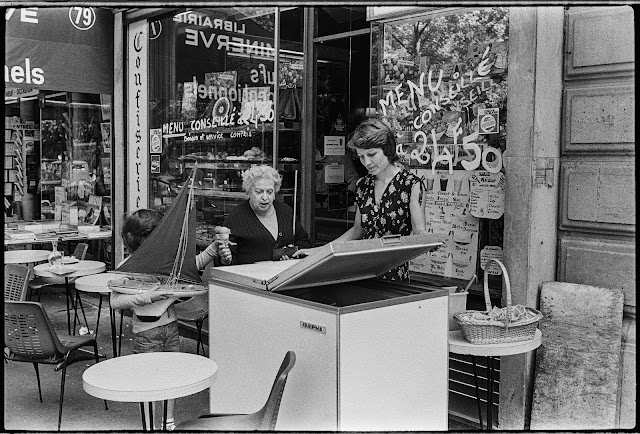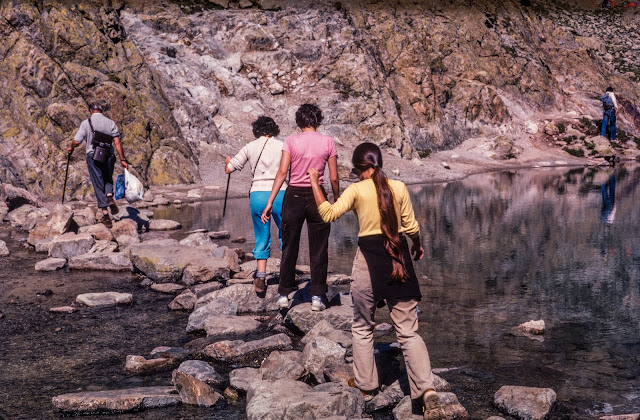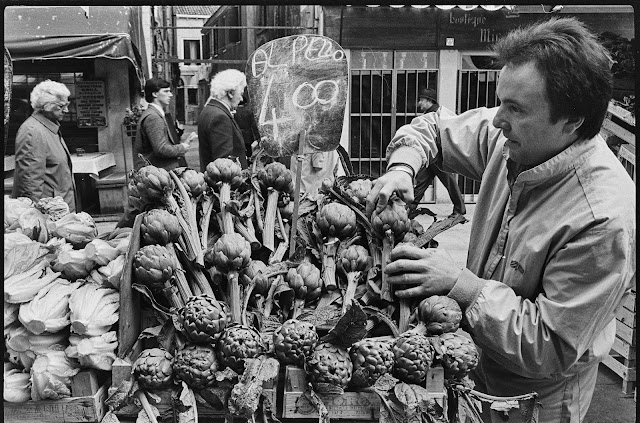I figured I would be "out of commission" with sutures on my face starting on Tuesday of next week so I thought I should come up with a hobby so as not to go too stir crazy. Sure, I'll go for long walks and do my dry land exercise but there's a lot of energy to soak up and I need something to keep my hands busy and out of the Devil's Workshop. Right?
So I looked around the office and I noticed a five foot high stack of negative pages. Film carefully inserted in rows into archival plastic. First I wondered if there is really such a thing as "archival" plastic but then I starting thinking about going through thousands of really old negatives to pull out some favorites and make some scans. To see how I did as a fledgling photographer with an ancient, compact film camera and no real guidance to speak of.
Some photos, the oldest ones, are from a backpacking trip I did with a girlfriend in the Fall of 1978. It was the old days. We actually carried sleeping bags, a small tent, a blue gas stove and one small frying pan. We spent nights in major cities in hotels but in the South of France the weather was perfect and we'd hit the campgrounds for weeks on end as we traveled on student Eurail passes on dozens of trains.
The campsite in Avignon was amazing. The one in the ski area above Grenoble, in mid-October, delivered a bone chilling couple of nights. In the mornings we had to be careful not to jostle that icicles that formed inside the tent from the condensation and freezing of our breath. The camp grounds outside Perpignan were a hippy paradise. But it was a different time. I can't imagine being so absolutely carefree these days. Scrambling eggs over a sputtering, portable burner, drinking Kronenbourg beers at 12,000 feet, feeling the cold winds start up at dusk, and hibernating in a small tent while the gusts buffeted the tent walls with gusto...
Camping in the Alps. 1978.
The tent that got dragged around and set up all over Europe for a semester...
Fish vendor. Greece.
Travel companion yawning during a rest break at the Pompidou Centre. 1978.
We stayed with friends in the city. A comfortable break from camping on hard ground.
Shopping in Villard de Lans, France. On the way back to the campground.
Hard to believe that in 1978 one could walk right up to the Mona Lisa painting.
No crowds, no bullet proof glass enclosure. No endless barrage of phone selfies. No influencer
bucket list. Just a nice painting by some famous guy from the past...
Some friends we met while camping on an island south of the Greek mainland.
Grandmothers in black,, with plastic bags of live octopi, accompanied us on the
boat rides between islands. Time was measured in days and weeks, not hours.
Going to the Parthenon was quick and easy. Any time of the day.
I didn't end up shooting many rolls of film but I'm oddly impressed at the amount of keepers I have gotten so far in the scanning process. And how easy it is to reproduce black and whites. You really can see just how much less resolution 35mm ISO 400 film negatives provide. And color? Fraught with peril.
But once you get into the rhythm of the process it goes easily. And the memories float up at you from the little screen on the back of the camera.
I wish I had been a better photographer when I started out but I think I would trade all the technical skills and training I have now to get back the sheer delight of discovering how to capture life with my camera at the very first of my camera adventures. Photography was secondary back then. Maybe it works better that way. Beginner's Eyes. There's a lot to be said for new adventures. Revisitations just leave one feeling empty. I can't imagine going to the Louvre any more. Every time I've been, paced over the years since my first visit with my parents in 1965, has been a little less fun. Less interesting. Less of a wonderful compromise between time and access. Now it's like waiting in the lines at Disney World. With the same people.
In 1978 there was no "Pyramid" to enter into the space. You entered through a small door on one side, barely tall enough for a person of normal height to get through without bending a bit. There were no lines. Student admission was something like $1.25 US. There was no café inside. It was marvelous. Uncrowded and unhurried. You could spend a long, full day there wonderfully engaged. No distractions.
Old people always talk about how great some things were back in the day. But it's true. Once you've been around the block a few times you have perspective. Those without perspective are enjoying or encountering stuff for the first time. They have no previous reference. Kinda like learning photography...Maybe things were better in the past. At least some things. But everyone comes to an experience in their own time, and with their own set of prior knowledge; they can't really know what they are missing in the present. Funny that way.
Wish I'd been more attentive about focusing back then...
Bookseller in Paris. One of the stalls along the Seine. 1978
Canonet QL17. Tri-X. Before I had enough practice focusing...
The Coliseum. A group of Japanese tourists.
Where else but Rome. 1978.
Somewhere outside of Grenoble, in the mountains.
Near Villard de Lans?
The crowds in Venice.
Vegetable merchant in Venice, Italy.
Venice. 1990. Looking for the crowds.
Rome. 1986.
Rome. 1990.
Venice. 1986.
Venice. 1986
In a WC on a Boeing 747 heading to Europe with a Leica M3.
And a pocket full of Tri-X. And B.
Paris. 1978
Tourists in 1978 could wander the halls of great galleries without bumping into
large groups of people. A more civilized time for travel.
Sete, France. On the way to Perpignan. 1978.
A lovely little hotel on the coast where we ate roast chicken outdoors,
on a warm evening under a strand of lights, just yards from the
Mediterranean beaches.
All the times I've gone back to favorite cities for work or just to revisit I'm reminded that the experiences in my younger years were the ones that live on with the most power. The most value in my mind. I guess those early experiences are part of the mix that makes you. I'm always glad I took a camera...


















































